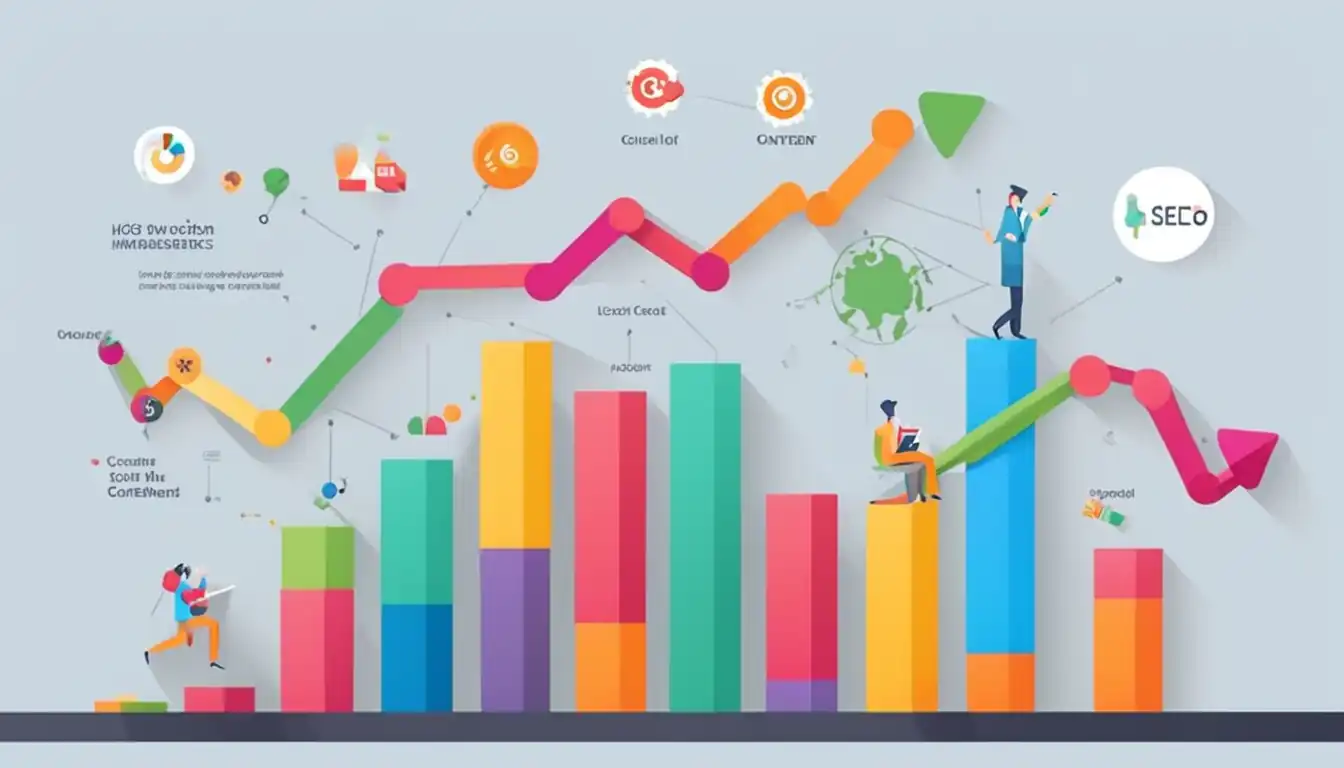Elevating Content Quality for a Competitive Edge

In the ever-evolving world of digital marketing, one thing remains constant: the importance of high-quality content. Whether you're a seasoned SEO expert or just dipping your toes into the world of online content, understanding how to elevate your content quality can give you a competitive edge in the crowded online space. So, grab a cup of coffee and settle in as we explore the key components, strategies, and benefits of producing top-notch content that will set you apart from the rest.
Understanding Content Quality
What is Content Quality?
Content quality refers to the value, relevance, and usefulness of the information presented in a piece of content. It encompasses factors such as accuracy, depth of research, uniqueness, readability, and engagement with the target audience.
Why Quality Trumps Quantity Every Time
Quality should always take precedence over quantity when it comes to content creation for several reasons:
- User Experience: High-quality content provides value to readers, keeping them engaged and coming back for more.
- Search Engine Rankings: Search engines prioritize quality content that meets user intent, leading to better rankings.
- Brand Reputation: Publishing high-quality content helps establish credibility and authority within your industry.
- Competitive Edge: By consistently producing top-notch content, you can differentiate yourself from competitors and attract a larger audience.
Key Components of High-Quality Content

Accuracy and Reliability
Maintaining accuracy and reliability in your content is crucial for establishing credibility with your audience. Make sure to fact-check all information before publishing, cite reputable sources, and avoid spreading misinformation.
Engagement and Readability
Engaging your audience through well-written, easy-to-read content is essential for keeping them on your page. Use clear headings, bullet points, and short paragraphs to break up text. Additionally, incorporate multimedia elements like images and videos to enhance the overall reading experience.
The Role of SEO in Content Quality

SEO plays a crucial role in determining the quality of content on a website. By optimizing content for search engines, businesses can increase their visibility online and attract more organic traffic. However, it is essential to strike a balance between incorporating keywords for SEO purposes and maintaining a natural flow in the content.
Balancing Keyword Use with Natural Flow
When creating content for SEO, it is important to strategically incorporate relevant keywords without compromising the readability and coherence of the text. Overusing keywords can result in keyword stuffing, which not only detracts from the quality of the content but also risks being penalized by search engines.
To maintain a natural flow while optimizing for SEO, consider the following tips:
- Conduct keyword research to identify relevant terms and phrases that align with your target audience's search intent.
- Integrate keywords seamlessly into the content, ensuring they fit naturally within the context.
- Prioritize user experience by focusing on creating valuable and engaging content that resonates with readers.
- Use variations of keywords and synonyms to diversify your vocabulary and avoid repetition.
By striking a balance between keyword use and natural flow, businesses can enhance their content quality while maximizing their SEO efforts.
Technical SEO and User Experience
In addition to keyword optimization, technical aspects of SEO also play a significant role in enhancing content quality. Factors such as site speed, mobile responsiveness, structured data markup, and internal linking all contribute to improving user experience and overall search engine visibility.
To elevate content quality through technical SEO considerations:
- Ensure your website is optimized for mobile devices to accommodate users accessing content on smartphones and tablets.
- Improve site speed by optimizing images, reducing server response time, and leveraging caching techniques.
- Implement structured data markup to provide search engines with additional context about your content.
- Utilize internal linking strategies to guide users through related topics and improve navigation within your website.
By prioritizing technical SEO alongside keyword optimization, businesses can create high-quality content that not only ranks well in search results but also provides a seamless user experience for visitors.
Strategies to Improve Content Quality
Research-Backed Writing Practices
In order to elevate the quality of your content and gain a competitive edge in the digital landscape, it is crucial to implement research-backed writing practices. Here are some key strategies to consider:
Keyword Research: Conduct thorough keyword research to understand what topics are trending and relevant to your target audience. Use tools like Google Keyword Planner or SEMrush to identify high-ranking keywords.
Competitor Analysis: Analyze your competitors' content strategies to identify gaps and opportunities for improvement. This can help you create unique and valuable content that sets you apart from the competition.
Data-Driven Insights: Utilize data analytics tools to track the performance of your content and make informed decisions on what resonates with your audience. This will enable you to optimize your content for better engagement and visibility.
Incorporating Multimedia Elements
Incorporating multimedia elements into your content can significantly enhance its quality and appeal to readers. Here are some effective ways to integrate multimedia elements:
Images and Infographics: Visuals like images and infographics can help break up text-heavy content and make it more engaging for readers. They also aid in conveying complex information in a digestible format.
Videos: Including videos in your content can increase dwell time on your website and improve user experience. Consider creating tutorial videos, product demos, or interviews with industry experts to add value to your content.
Interactive Features: Interactive elements such as quizzes, polls, or calculators can make your content more interactive and encourage user engagement. This can lead to higher retention rates and increased sharing of your content.
By implementing these strategies and focusing on research-backed writing practices, you can elevate the quality of your content and gain a competitive edge in the crowded digital landscape.
Measuring the Impact of High-Quality Content

Creating high-quality content is essential for any business looking to stay competitive in today's digital landscape. Not only does it help attract and retain customers, but it also plays a crucial role in improving search engine rankings and driving organic traffic to your website.
Tools and Metrics for Assessing Content Performance
To measure the impact of high-quality content, businesses can utilize a variety of tools and metrics. These include:
- Google Analytics: This tool provides valuable insights into how users interact with your content, including page views, bounce rates, and time on page.
- SEO tools: Platforms like SEMrush or Ahrefs can help monitor keyword rankings, backlinks, and overall organic traffic generated by your content.
- Social media analytics: Tracking engagement metrics on platforms like Facebook, Twitter, and LinkedIn can give you an idea of how well your content is resonating with your audience.
By regularly monitoring these metrics, businesses can gain a better understanding of which types of content are performing well and which may need improvement.
The Long-Term Benefits of Prioritizing Quality
Prioritizing quality over quantity when it comes to content creation can have several long-term benefits for businesses. These include:
"Quality content not only helps establish credibility and authority within your industry but also builds trust with your audience."
"High-quality content is more likely to be shared across social media platforms, increasing brand visibility and driving referral traffic."
"Search engines like Google prioritize quality content in their algorithms, leading to higher rankings and increased organic traffic over time."
By consistently producing high-quality content that resonates with your target audience, businesses can gain a competitive edge in their industry and see long-lasting results in terms of brand awareness and customer engagement.
Conclusion
As you navigate the vast landscape of digital marketing, remember that quality always trumps quantity when it comes to content creation. By focusing on accuracy, engagement, and incorporating SEO best practices into your writing, you can elevate your content quality and stand out in a sea of mediocrity. So, go forth with confidence, armed with the knowledge and tools to produce high-quality content that will not only attract readers but also keep them coming back for more.